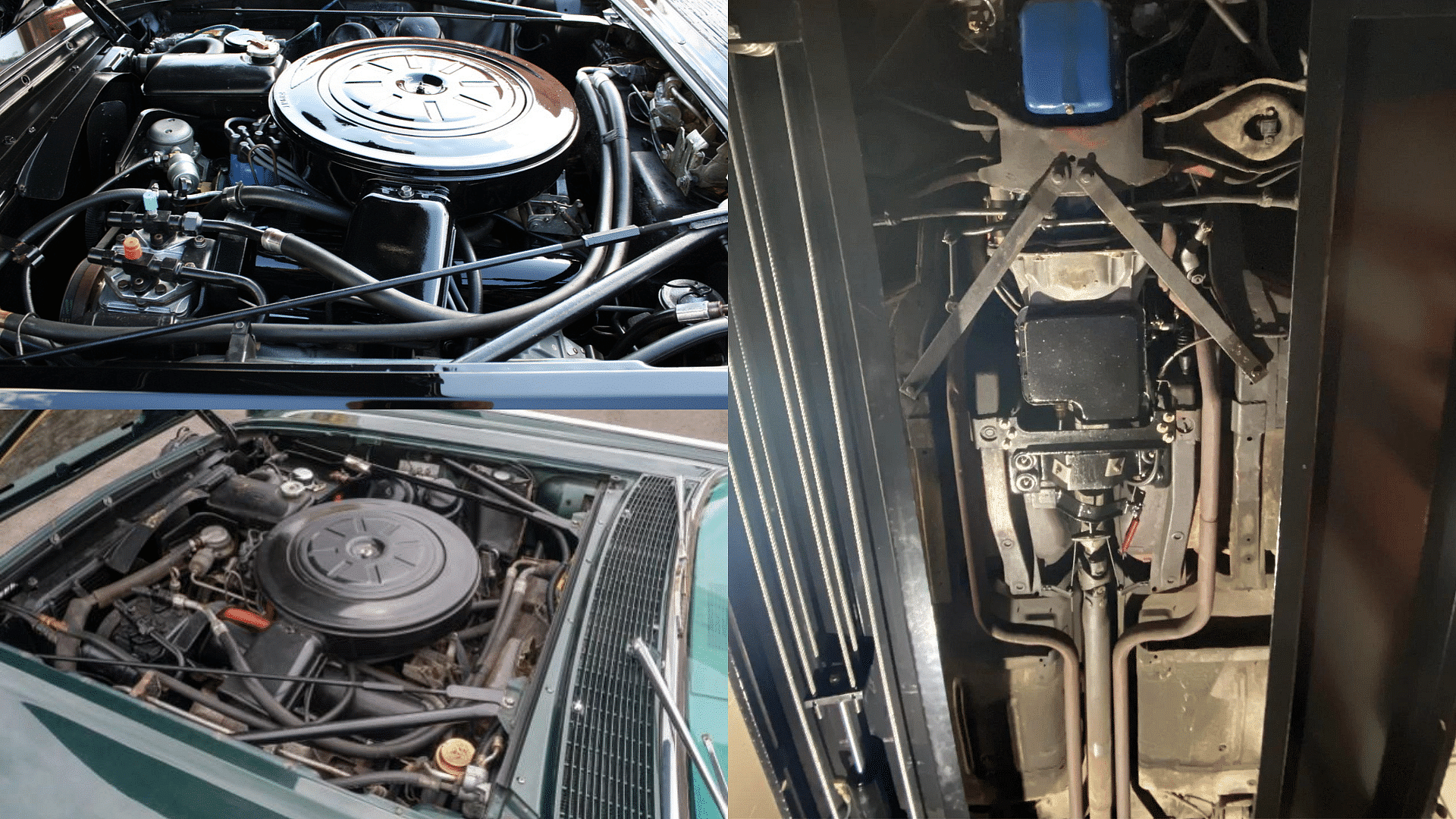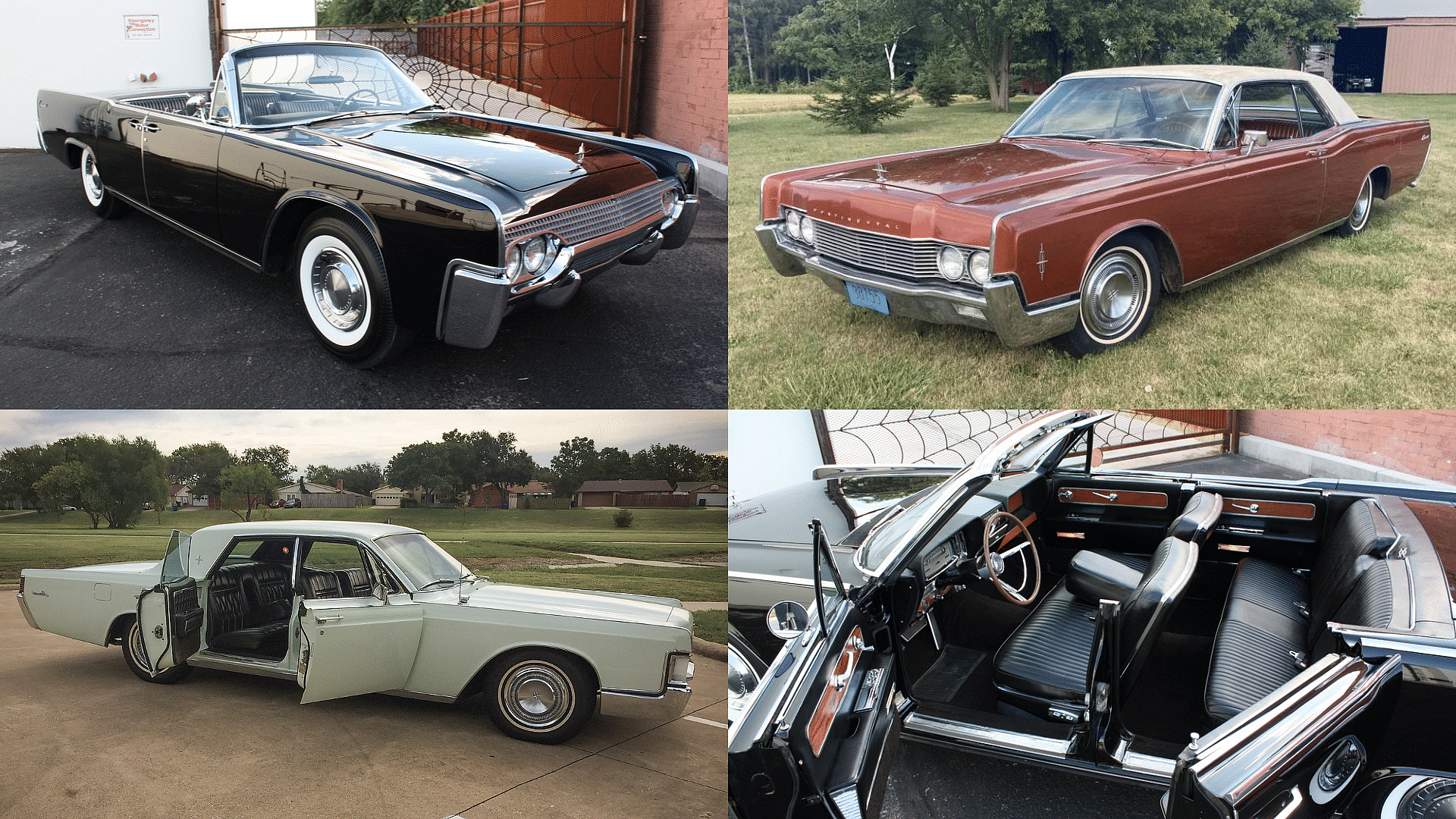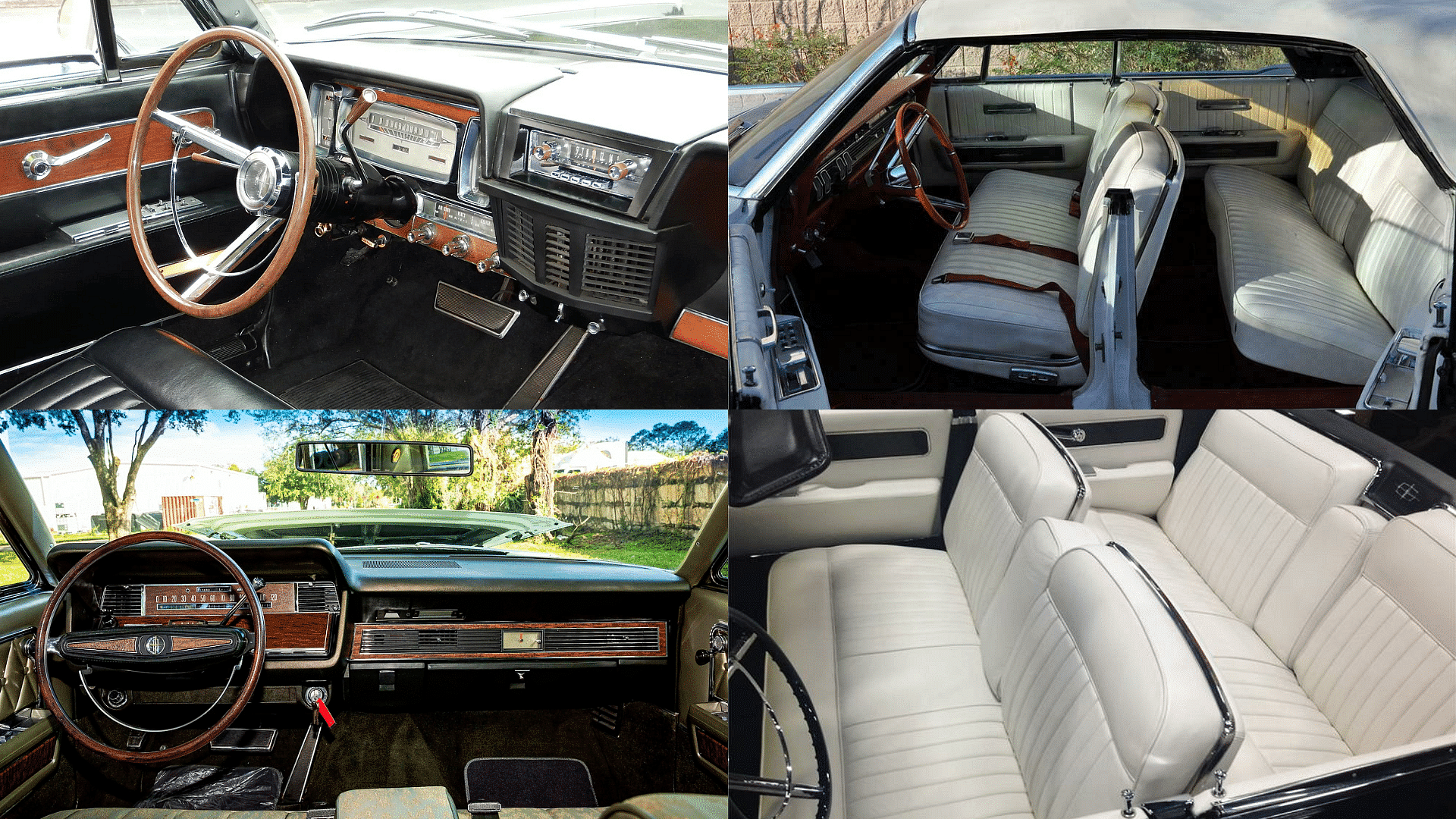1961–1969 Lincoln Continental Review, Price, and Specs
It was not just muscle cars that were flourishing in the 1960s. Apparently, in the same era, American luxury sedans and convertibles were also basking in fame and popularity. On the one hand, the Ford Mustang was increasing the heartbeats of consumers, while on the other hand, cars like the Lincoln Continental were calming people down with their sophisticated driving ability and comfortable cabin.
Published January 30, 2024

The Lincoln Continental started its fourth generation in 1961 and ended it in 1969. The previous generations of the Continental were sold with the "Mark" series tag. However, from 1961 on, the Lincoln Continental was the only badge that was stuck outside.
The fourth-generation Continental took a different design approach from long-finned cars like the Chevy El Camino and the Cadillac Series 62, which were popular in the 1950s. The Continental was lower and wider, but it also had a modern appeal with respect to that time.
1961–1969 Lincoln Continental Price?
The Lincoln Continental-fourth generation model has an average price tag of $63,821. However, if you are aiming for the 1961 Lincoln Continental, then you will be bidding up to $73,267 in some auctions. On the other hand, the 1969 Lincoln Continental is rather cheaper and only costs $20,408. Meanwhile, if you want to have Malcolm in the Middle, then the 1965 Lincoln Continental will set you back $65,101.
1961–1969 Lincoln Continental history, popularity, cultural significance?
Lincoln, a division of Ford, was struggling with profits in the 1950s, and the competition from Cadillac was fierce. It was very much possible that Robert McNamara would discontinue the Continental. However, the last-minute saving of the original proposed design of the Ford Thunderbird by Elwood Engel rescued the car from extinction.
The Lincoln Continental went from being on the verge of discontinuation to becoming one of the most desired classic luxury sedans ever. It also received some awards, including Car Life's 1961 Engineering Excellence Award. Just in the first year of its introduction, Lincoln had sold 25,160 units of the Continental. 22,302 Continental Sedan models were sold, whereas only 2,857 examples of the Continental Convertible were purchased.

That said, the Lincoln Continental has always been a big cultural icon and has been associated with various famous celebrities. Frank Sinatra is known to have the 1956 Continental Mark II, whereas the 1973 Lincoln Continental was owned by Elvis Presley. Meanwhile, Lady Gaga reportedly has a 1965 Lincoln Continental Convertible.
Dax Shepard also owns a black 1967 Continental. Additionally, a dark blue 1964 Lincoln Continental was seen in the 1964 James Bond movie Goldfinger, whereas a black 1965 Lincoln Continental was used in the 1999 Matrix movie.
The Lincoln Continental is also associated with some dark parts of the history of the United States. The US government secured two Lincoln Continentals in total. The first one was the 1961 Continental, which was used by then-US President John F. Kennedy. It is also called Kennedy Limousine SS-100-X, and it was modified by Hess & Eisenhardt.
After the assassination of JFK, all presidential vehicles were fortified and made armored. After years, the 1969 Lincoln Continental limousine was acquired for the 37th U.S. President, Richard Nixon.
1961–1969 Lincoln Continental powertrain/engine?

There were a total of three engine choices offered over the course of the production run. 1961–1965 Lincoln Continental models were offered with only a 430-cubic-inch or 7.0-liter V8 engine, which made 300 horsepower and 465 lb-ft of torque. The engine was given a power bump of 20 horses in 1963. In 1966, the Continental had a 462-cubic-inch, or 7.6-liter, V8 engine under the hood, which produced 340 horses and 485 lb-ft of torque.
Before the start of 1969, the Lincoln Continental again received a new engine. This time it was a 460-cubic-inch, or 7.5-liter, V8 engine that was making 365 horsepower and 485 lb-ft of torque. That said, a 3-speed Turbo-Drive automatic and a 3-speed C6 automatic transmission were given on the 1961–1969 Lincoln Continental models.
1961–1969 Lincoln Continental Design and Iterations?
At first, the Lincoln Continental was only sold as a full-size four-door sedan and a four-door convertible. However, the later body style is historically more significant since the Continental was the first four-door convertible car after WWII. That said, the Continental models featured "suicide doors," which apparently died for many brands. However, these doors can now be seen in various models of Rolls-Royce, such as the Wraith and the Ghost.

The 1961–1969 Lincoln Continental was designed by Elwood Engel and was based on the reworked and stretched unibody platform that was meant for the Ford Thunderbird. Furthermore, this Lincoln Continental was heavier than its fellow competitors, but it was 15 inches shorter compared to the previous third-generation models.
The 4th generation Lincoln Continental received several changes and updates with respect to its interior and exterior design during its production run. From 1961 to 1963, it only had a sedan and convertible body styles. In 1963, a facelift was given to the Continental. The trunk lid was redesigned, and a reworked grille insert was introduced.
Furthermore, the position of the radio antenna was shifted to the right fender. At the same time, the cabin also saw some improvements as the rear legroom was expanded and power front vent windows were offered. Moreover, trunk space was also increased.

The second series of major updates was done from 1964 to 1965. In 1964, the wheelbase was extended by 3 inches. The roofline was also changed, and now it has a flat side glass. Additionally, the cabin was also refreshed, and the interior room was also increased. Furthermore, the Continental Town Brougham concept car was also introduced in 1964. In 1965, the front fascia was updated, and the electric-razor curve was ditched. A new flat-looking grille with chrome accents was installed.
In 1966, the Lincoln Continental was not only less expensive but also four inches longer. Apart from having a new sheet metal body outside, the 1966 Continental also received additional legroom inside. The convertible model with a retractable roof received a second hydraulic pump and a glass rear window. The 1966 Continental Convertible also came with newly available features like a tilt-steering wheel and an 8-track tape player.
Furthermore, a two-door hardtop coupe model was introduced in 1966 to challenge the Cadillac Coupe de Ville and the Imperial Crown Coupe. 1967 was the last year for the Continental Convertible, which contributed to the 1967 final sale count of 45,667.
In 1968, the federal government's safety regulations made it compulsory to have default features like parking lights, turn signals, and torso seatbelts. The Lincoln star symbol replaced the Continental badge on the front fascia. Lastly, the Lincoln Continental Mark III 2-door coupe model was sold from 1969 to 1971. In 1970, the foundation for the fifth-generation Continental was laid.
Final Thoughts
The Lincoln Continental from 1961 to 1969 proved itself not only as a commercial success but also as an action and thriller movie sweetheart. Its design remains timeless, and its V8 engines continue to be potent. In conclusion, the 4th generation Continental is a complete luxury package that is worth keeping in your garage.
Write a comment
Comments
No Comments Yet









